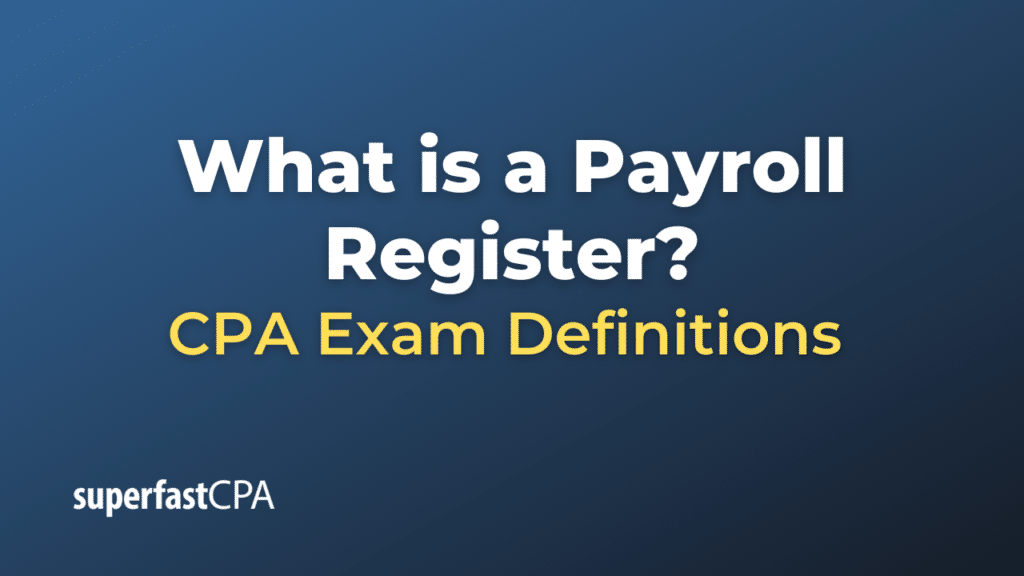Payroll Register
A payroll register is a document that summarizes the payroll activity for a particular pay period. It acts as a central place to review and track all payroll data for each employee during that period. It is an important tool in the payroll process as it helps businesses maintain accurate financial records and adhere to legal requirements.
The information in a payroll register typically includes:
- Employee Information: The names of the employees, their ID numbers, department, and job titles.
- Hours Worked: The number of regular and overtime hours worked by each employee.
- Wages: The gross wages for each employee, including regular pay, overtime pay, bonuses, commissions, or other forms of compensation.
- Deductions: The amount of any pre-tax and post-tax deductions for each employee. This includes income tax, Social Security, Medicare, retirement plan contributions, health insurance, and any other deductions like garnishments or union dues.
- Net Pay: The amount of each employee’s net pay, which is their gross wages minus all deductions. This is the amount the employee actually receives in their paycheck or direct deposit.
- Employer costs: The total cost to the employer, including the employer’s share of taxes like Social Security and Medicare, unemployment insurance contributions, and any other employer-paid benefits.
- Totals: The payroll register typically includes totals for each category (like total hours worked, total gross wages, total deductions, total net pay, and total employer costs) for all employees.
The payroll register allows the employer to see all this information at a glance, which is useful for checking for errors, preparing financial reports, and conducting audits. The details within a payroll register also help when it comes to addressing any payroll-related queries or issues.
Finally, payroll registers are essential for maintaining accurate historical payroll records, which are necessary for various purposes like tax reporting, financial analysis, budgeting, and strategic planning.
Example of a Payroll Register
Let’s consider a hypothetical example of a payroll register for a small company, ABC Ltd., with three employees: John, Sarah, and Robert. They are paid bi-weekly. The details are as follows for one particular pay period:
| Employee Name | Job Title | Hours Worked | Gross Wages | Federal Tax | State Tax | Social Security | Medicare | Health Insurance | 401(k) | Net Pay | Total Cost to Employer |
|---|---|---|---|---|---|---|---|---|---|---|---|
| John | Manager | 80 | $3,200 | $640 | $160 | $198.40 | $46.40 | $150 | $160 | $2,045.20 | $3,594.80 |
| Sarah | Designer | 80 | $2,400 | $480 | $120 | $148.80 | $34.80 | $150 | $120 | $1,446.40 | $2,734.60 |
| Robert | Developer | 80 | $2,800 | $560 | $140 | $173.60 | $40.60 | $150 | $140 | $1,696.20 | $3,164.20 |
| Totals | 240 | $8,400 | $1,680 | $420 | $520.80 | $121.80 | $450 | $420 | $5,187.80 | $9,493.60 |
This payroll register provides a summary of all payroll data for the pay period. It shows the hours worked, gross wages, deductions, and net pay for each employee. It also shows the total cost to the employer, which includes the gross wages plus the employer’s share of Social Security and Medicare taxes (not shown separately in this table).
The “Totals” row at the bottom sums up each column, showing the total hours worked, total gross wages, total deductions, total net pay, and total cost to the employer for all employees. This information can be useful for budgeting, financial reporting, and managing labor costs.













